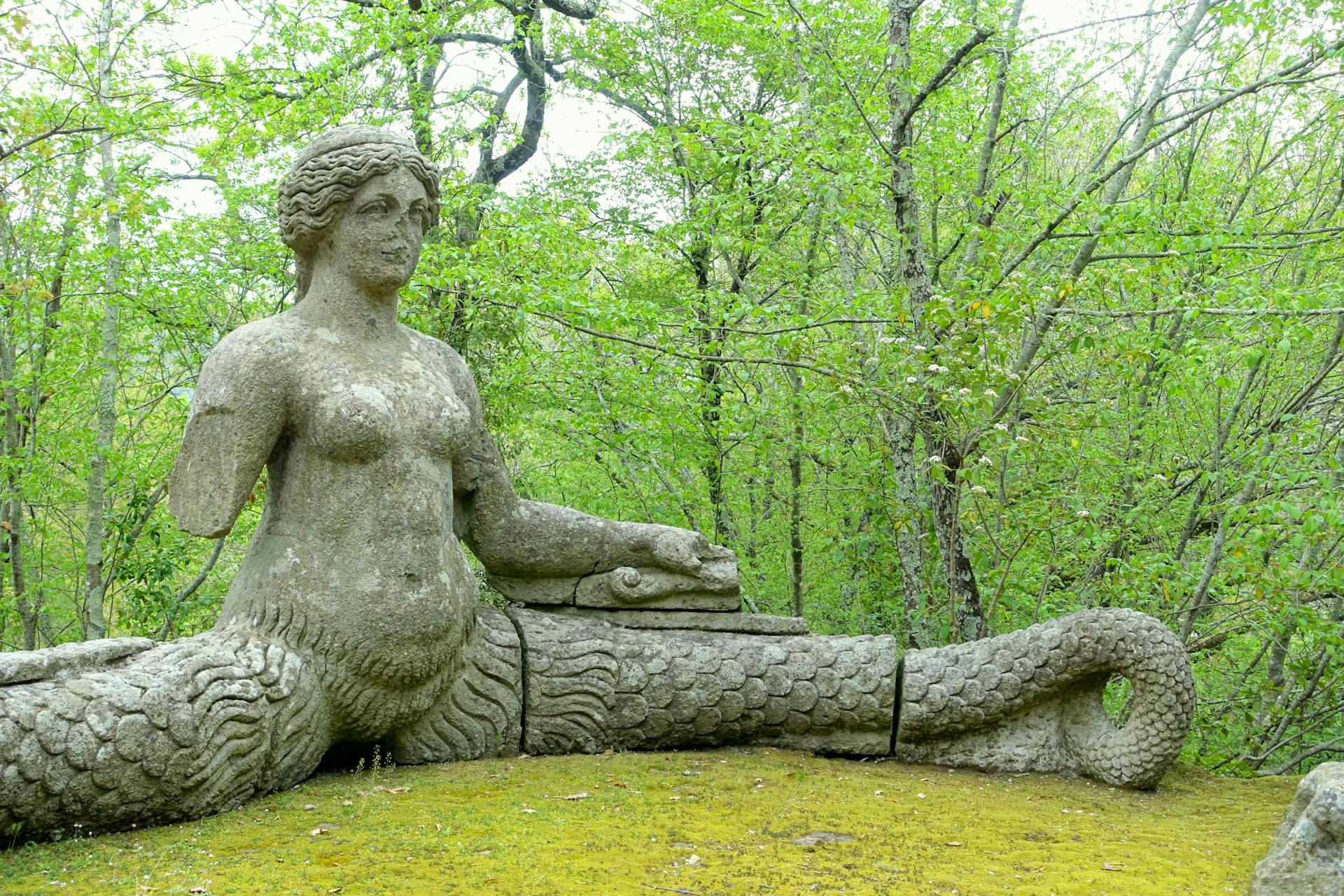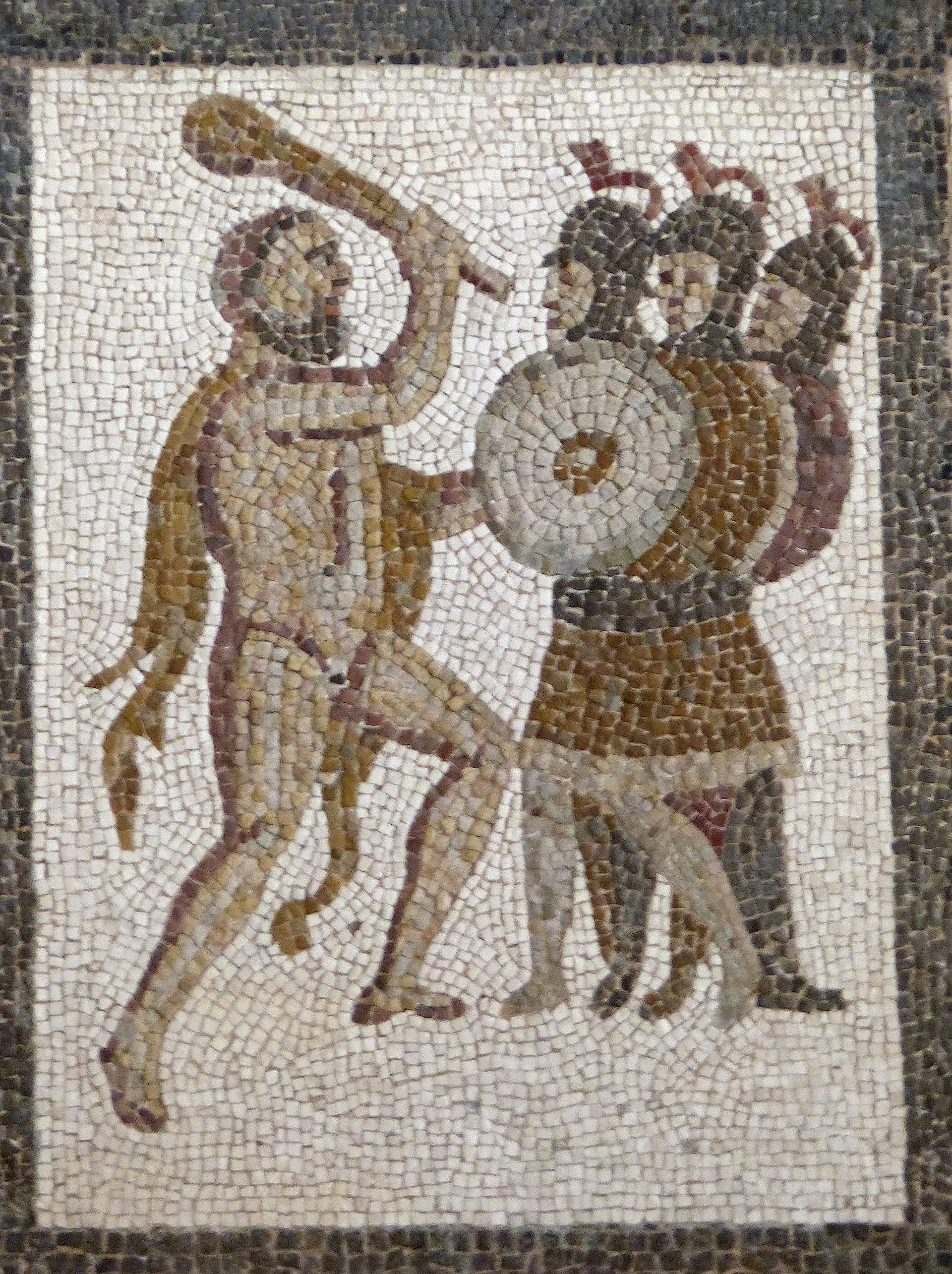Echidna

Statue of Echidna in Sacro Bosco, attributed to Simone Moschino (ca. 16th century).
Wikimedia CommonsCC0Overview
Echidna was a female serpent-monster of Greek mythology, the daughter of the sea gods Phorcys and Ceto. She was usually represented with the head and torso of a woman and the tail of a serpent. Echidna mated with another monster, Typhoeus, and together they spawned a new generation of monsters, including Cerberus, the Chimera, the Hydra, and Orthus. According to one source, Echidna was eventually slain by Argus, a hundred-eyed giant.
Etymology
The name “Echidna” (Greek Ἔχιδνα, translit. Échidna) comes from the Greek word ἔχις (échis), meaning “viper.” This word in turn is derived from the Indo-European root *h₂eǵʰi-, meaning “snake.”[1]
Pronunciation
English
Greek
Echidna Ἔχιδνα (translit. Échidna) Phonetic
IPA
[ih-KID-nuh] /ɪˈkɪd nə/
Attributes
Locales
Echidna lived at the very edge of the world. According to the poet Hesiod, “She has a cave deep down under a hollow rock far from the deathless gods and mortal men. There, then, did the gods appoint her a glorious house to dwell in: and she keeps guard in Arima beneath the earth.”[2]
The location of Hesiod’s “Arima” (also known as “the land of the Arimi”) was debated even in antiquity. Some said that it was somewhere in Cilicia, where Echidna’s mate Typhoeus was born.[3] But others identified the land of the Arimi with either Lydia, Catacecaumene in Mysia, Hyde (possibly another name for Sardis), Syria, or Ischia.[4]
Other authors had different ideas about where Echidna lived. According to the historian Herodotus, Echidna—either the Greek Echidna or one of her local counterparts—lived among the Scythians, a nomadic tribe who occupied the Eurasian steppes to the north of Greece and who supposedly traced their descent to her (see below).[5] According to the comedian Aristophanes, Echidna lived in the Underworld.[6] And the epic poet Quintus of Smyrna, most vaguely of all, claimed that Echidna dwelled “close on the borders of Eternal Night.”[7]
Appearance and Abilities
Hesiod offered a detailed portrait of Echidna, describing her as “half a nymph with glancing eyes and fair cheeks, and half again a huge snake, great and awful, with speckled skin, eating raw flesh beneath the secret parts of the holy earth.”[8]
This description of Echidna as flesh-eating may suggest that she had a serpent head in addition to her human head, presumably at the end of her snake half.[9] Echidna thus seems to have been imagined as a human woman—even a beautiful woman—from the waist up, and a serpent from the waist down, possibly culminating in a snake head at the tip of her tail.
Hesiod also seems to have conceived of Echidna as immortal, describing her as “a nymph who dies not nor grows old all her days.”[10] However, this was contradicted by later accounts of Echidna’s death (see below).
Later authors sometimes made Echidna even more terrifying. Aristophanes, for example, said that she had one hundred heads (though given that he was a comedian, this description should be taken with a grain of salt).[11] According to Nonnus, the epic poet who composed the Dionysiaca, Echidna was a hideous, venomous creature.[12]
On the other hand, the Orphics, a Greek religious cult with very distinctive ideas about the gods and the creation of the cosmos, viewed Echidna as a snake from the neck down (rather than the waist), with only the face of a beautiful woman.[13]
Iconography
Echidna does not seem to have been a popular subject in ancient art. In fact, no ancient depictions of her have survived (there are a handful of images of snake-monsters that may represent Echidna, but these are few and dubious).[14]
The travel writer Pausanias, who lived in the second century CE, did mention one ancient representation of Echidna on the famous Amyclae Throne. This was a monumental throne of Apollo from around the sixth century BCE, decorated with elaborate reliefs and sitting at the heart of the god’s sanctuary in the Laconian village of Amyclae. One of the reliefs supposedly showed Echidna with her mate Typhoeus.[15]
Family
Family Tree
Mythology
Origins
Echidna was a female monster from the early days of the mythical cosmos. Her serpent form suggests that her myth was shaped by Greek contact with the Near East; she especially recalls Tiamat, a female serpent of Mesopotamian mythology, but also bears some similarities to the Hittite dragon Illuyanka.
The Death of Echidna
One late source, the mythographer known as Apollodorus, wrote of how Echidna used to terrorize passersby who dared to come near her home. She was eventually punished for this: Argus, a hundred-eyed giant who served the goddess Hera, killed her in her sleep.[36]
The Scythian Echidna
The Greeks also knew a Scythian version of the Echidna myth. The Scythians were warlike nomads of the Eurasian steppes and thus the northern neighbors of the Greeks.
In the Scythian origin story (at least as told by Greek sources), Heracles was traveling through the land that would someday be Scythia after successfully capturing the cattle of Geryon (his tenth labor). While he was taking a nap, the Scythian Echidna—a monster who was a woman above and a snake below—stole his mares. She refused to return them unless Heracles agreed to sleep with her.

Detail of Twelve Labors Roman mosaic from Lliria, showing Heracles battling Geryon (3rd century CE).
Benjamín Núñez GonzálezCC BY-SA 4.0Heracles, having no choice, had sex with Echidna. She then delayed him further until she had given birth to three sons, named Scythes, Agathyrsus, and Gelonus. Echidna asked Heracles what she should do with the boys once they came of age: keep them or send them to Heracles. In response, Heracles gave Echidna one of his bows and his belt and told her:
When you see the boys are grown up, do as follows and you will do rightly: whichever of them you see bending this bow and wearing this belt so, make him an inhabitant of this land; but whoever falls short of these accomplishments that I require, send him away out of the country. Do so and you shall yourself have comfort, and my will shall be done.[37]
When the boys were fully grown, only the youngest, Scythes, was able to accomplish the task. Thus, Echidna kept Scythes in the land but sent Agathyrsus and Gelonus away. Scythes went on to become the ancestor of the Scythian kings.[38]
Worship
The Greeks did not worship Echidna themselves. However, a large serpent was worshipped in a region of Anatolia known as Phrygia, and the Greeks often identified this serpent with Echidna. It was later said that this Echidna was cast into an abyss by Philip the Apostle.[39]
Pop Culture
Echidna is still sometimes encountered in modern adaptations of Greek mythology, such as Rick Riordan’s Percy Jackson and the Olympians book series and the TV series Hercules: The Legendary Journeys.
A quill-covered animal native to New Guinea and Australia, sometimes known as the “spiny anteater,” is also named after the mythical Echidna.